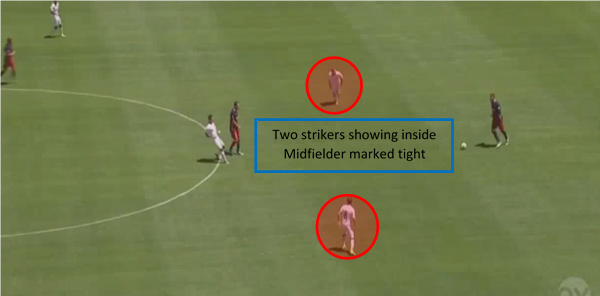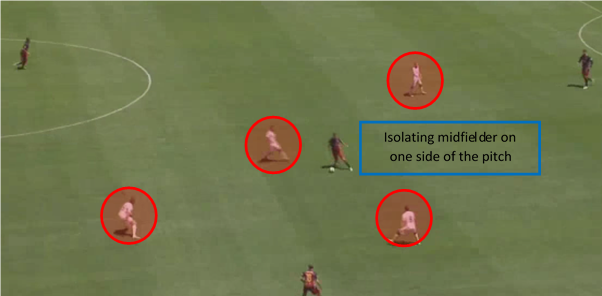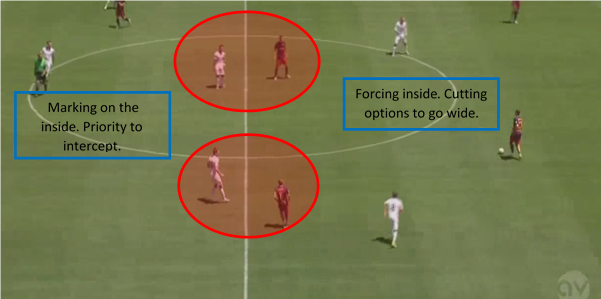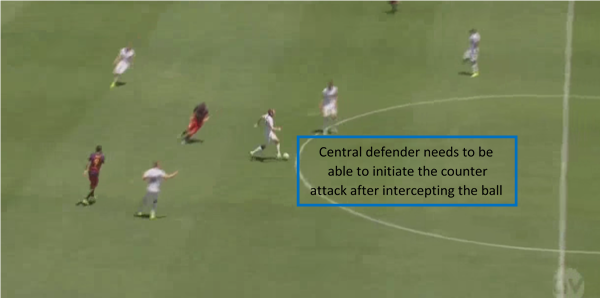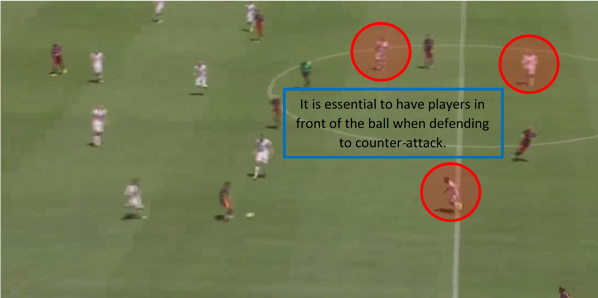By Alex Trukan
Football can be divided into three phases: attack, defence and transition (attack – defence, defence – attack). That division simplifies the game and makes it easier to understand and coach, however, any division carries with itself a danger of isolating components from the bigger whole and losing the complexity and realism of the game. Putting all of that into context, the way your team attacks, will affect how it defends. The way your team defends will affect how your team will attack. All of the four phases are linked and interconnected. Modern football has become a game of ‘chess’, where every move will have an influence on other and players have to think couple of steps ahead. For example, if you want to exploit the opponents on the counter attack, the preparation starts when your team is in the defensive phase. The technical details of defending will be then influenced by the next phase which is a transition to attack. This article presents an example of defending to counter attack from the middle third in a variation of 1-4-3-3 formation.
Forcing Play – Striker’s Unit
The first aim of the team when opposition builds up from the back would be to direct them into areas where the regain of possession is planned, in this case it would be the middle third. Striker form a triangle with a point down, cutting the full backs out of the game and forcing central defender to play centrally. Third striker (bottom player of the triangle) marks the defensive midfielder coming deep and prevents him turning. It is important that at least two strikers play between opposition’s defensive and midfield units, what will be useful if possession is regained (players in front of the ball).
If defensive midfielder gets in possession, the role of the strikers and supporting midfielders is to isolate him into one side of the pitch, cutting an option to switch play and forcing play. Having a lot of players around the ball will help in switching to attack quickly.
Marking and Covering
Midfielders are the primary players responsible for regaining possession and initiating the counter-attack. Marking tight to be able to intercept but at the same time, not totally cutting the passing options (inviting play) is crucial. Midfielders should mark from inside-out, protecting the central areas and forcing outside towards the wings, rather than centrally towards the goal side.
The opposition, in order to play out from the back, will often try to create an overload in central areas by dropping one of the strikers deeper. In that case, it is the role of the centre back to follow and track the runner. Otherwise, it will be difficult for midfielders to mark the player coming from behind off shoulder.
Tackling and Intercepting
That’s also a perfect opportunity to intercept the pass and start the counter-attack. Therefore, centre backs should be able to recognise the best forwards passing options and able to execute them upon regaining possession (technical and decision making requirements). The same applies to midfielders and strikers who will try to intercept higher up the pitch.
When regaining possession, it is crucial to have the players in front of the ball who can create space for the runners or offer a quick passing option in behind the opposition defence. The higher the opposition is up the pitch, the bigger spaces are created in behind of their defence. That should be taken into consideration when prioritising options upon counter attack.
[wpsharely id="2988"][/wpsharely]Once the opposition has went through the unit, it is also important to keep applying pressure from the back. That can cut some of the back pass options and create additional pressure for the player on the ball increasing the chances of winning possession and making quick transition to attack.
By Alex Trukan, Development Coach, Nottingham Forest
@AlexTrukan

